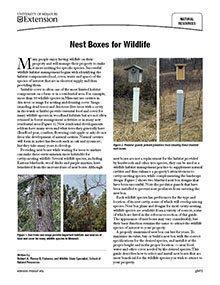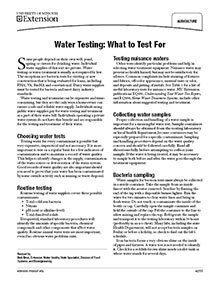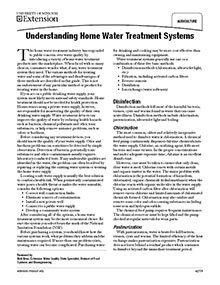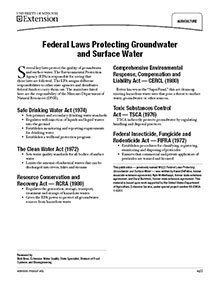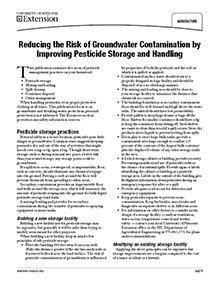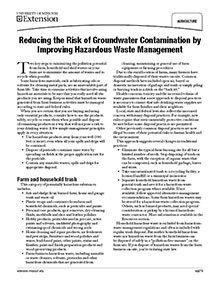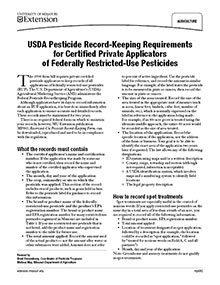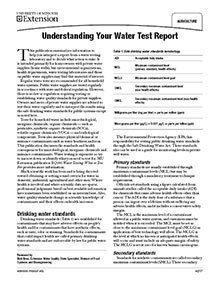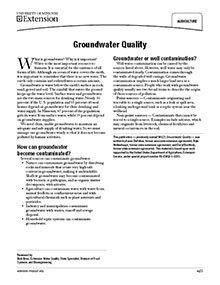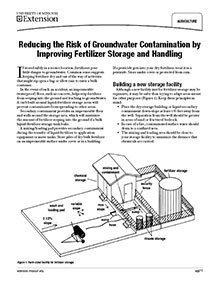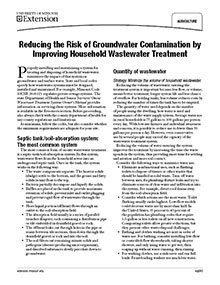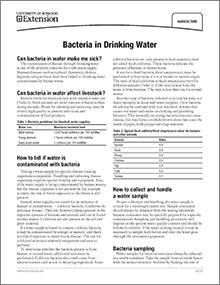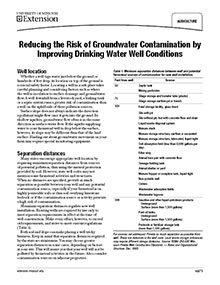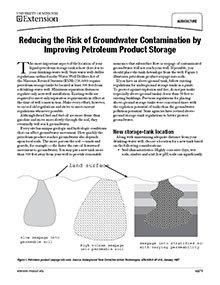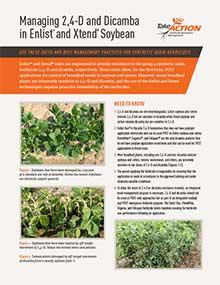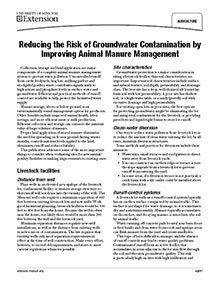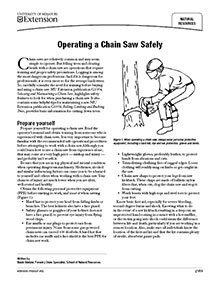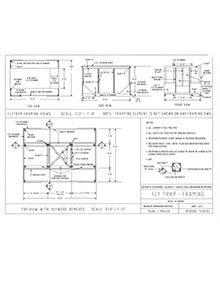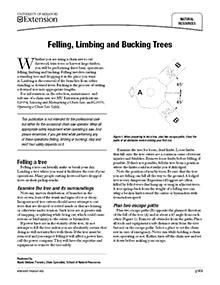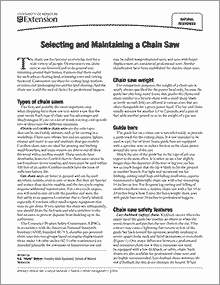Nest Boxes for Wildlife
Reviewed
Editor's note
The References section was updated in June 2017.
Water Testing: What to Test For
Revised
If your drinking water comes from a well, pond, spring or cistern, you need to know about various water tests and how to obtain water samples for testing. Keep your water supply safe and reliable. Learn how in this University of Missouri Extension guide.
Understanding Your Home Water Treatment Systems
Revised
The home water treatment industry has responded to recent public concern over water quality by introducing a wide variety of home water treatment products into the marketplace. When faced with so many choices, consumers wonder what, if any, water treatment system they need.
Federal Laws Protecting Groundwater and Surface Water
Revised
Find the U.S. laws that protect water quality and establish standards for state agencies to follow in this University of Missouri Extension guide.
Reducing the Risk of Groundwater Contamination by Improving Pesticide Storage and Handling
Revised
This publication examines five areas of pesticide management practices on your farmstead:
Reducing the Risk of Groundwater Contamination by Improving Hazardous Waste Management
Revised
Two key steps to minimizing the pollution potential from farm, household and shed wastes on your farm are to minimize the amount of wastes and to recycle when possible.
USDA Pesticide Record-Keeping Requirements for Certified Private Applicators of Federally Restricted-Use Pesticides
Revised
Brad Fresenburg
Coordinator of Pesticide ProgramsMelissa May
Groundwater Quality
Revised
Reducing the Risk of Groundwater Contamination by Improving Fertilizer Storage and Handling
Revised
If stored safely in a secure location, fertilizers pose little danger to groundwater. Common sense suggests keeping fertilizer dry and out of the way of activities that might rip open a bag or allow rain to enter a bulk container.
Reducing the Risk of Groundwater Contamination by Improving Household Wastewater Treatment
Revised
Make sure your home's wastewater treatment system is properly designed, installed and maintained to minimize its impact on groundwater and surface water. Get tips from this University of Missouri Extension guide.
Bacteria in Drinking Water
Revised
Reducing the Risk of Groundwater Contamination by Improving Drinking Water Well Conditions
Revised
Well location
Whether a well taps water just below the ground or hundreds of feet deep, its location on top of the ground is a crucial safety factor. Locating a well in a safe place takes careful planning and considering factors such as where the well is in relation to surface drainage and groundwater flow.
Reducing the Risk of Groundwater Contamination by Improving Petroleum Product Storage
Revised
The most important aspect of the location of your liquid-petroleum storage tank is how close it is to your drinking-water well. State water well-driller regulations outlined in the Water Well Drillers Act of the Missouri Revised Statutes (RSMo 256.600) require petroleum storage tanks be located at least 300 feet from a drinking-water well.
Managing 2,4-D and Dicamba in Enlist and Xtend Soybean
New
Editor’s note
The following abstract describes a publication that is only available as a downloadable PDF.
Reducing the Risk of Groundwater Contamination by Improving Animal Manure Management
Revised
Learn about livestock manure collection, storage and land application to prevent uncontrolled runoff from cattle feedyards, hog lots, milking parlors and stockpiled poultry waste.
Operating a Chain Saw Safely
Reviewed
Chain saws are relatively common and may seem simple to operate. But felling trees and clearing brush with a chain saw are operations that require training and proper safety precautions.
Horn Fly Trap Blueprint
Reviewed
Editor's note
The following abstract describes a downloadable PDF. Please see the link to the PDF file. The PDF is 50 percent the size of the original blueprint.
This plan provides construction details to build a walk through fly trap for cattle. The frame is shown to be constructed using CCA treated lumber but a steel frame can be substituted.
Felling, Limbing and Bucking Trees
Reviewed
Whether you are using a chain saw to cut firewood, trim trees or harvest large timber, you will be performing three basic operations: felling, limbing and bucking. Felling involves cutting a standing tree and dropping it in the place you want it. Limbing is the removal of the branches from either standing or downed trees. Bucking is the process of cutting a downed tree into appropriate lengths.
Selecting and Maintaining a Chain Saw
Reviewed
The chain saw has become an everyday tool for a wide variety of people. Homeowners use chain saws to cut firewood and to do general tree trimming around their homes. Farmers find them useful for such jobs as clearing land, trimming trees and cutting firewood. Contractors use them for cutting large timbers, crossties and landscaping ties and for land clearing. And the chain saw is still the tool of choice for professional loggers.
Vegetable Harvest and Storage
Reviewed
Timely harvest and proper storage help maintain the quality and freshness of garden vegetables. This publication describes how and when to harvest vegetables; special harvest preparations and storage requirements; and appropriate length and kinds of storage.
How to Size a Farm and Home Water System
Revised
A farmstead water system should be able to supply the peak flow rate continuously for two hours. A home water system should be able to supply peak demand continuously for one hour. If the peak use rate exceeds the maximum well yield, provide intermediate storage.
Can-Do Recipes: Canned Pineapple
New
Editor's note
The following abstract describes a publication that is only available as a downloadable PDF.
